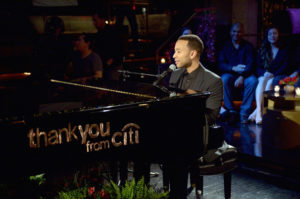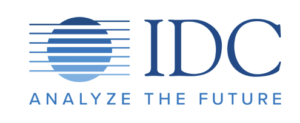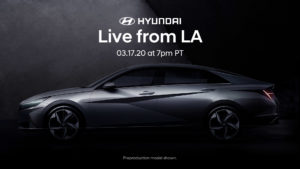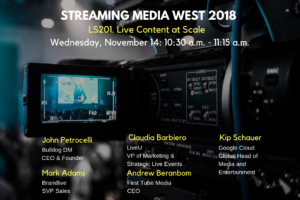
Leading brands know that nothing can captivate an audience like a compelling live event. Events such as festivals, product launches, concerts, pop-ups, and conferences can provide a full, immersive sensory experience for participants, enabling them to feel like part of the action.
And there’s nothing like being there for a Big Reveal: The day that Steve Jobs unveiled the iPhone onstage at MacWorld 2007 is still a legendary moment in tech history.
The challenge is that live events are exponentially more expensive than other forms of marketing, and your return on investment isn’t always clear.
Experiential marketing requires your team to put together a laser-sharp game plan for the entire event. If you’re hosting a conference, you need to have a detailed agenda for speakers and entertainment, make sure your A/V setup is ready to go, ensure that you have enough boxed lunches to cater to your 2,000 attendees (400 of whom are gluten-free), and make sure that your attendees have adequate lodging options for the event, among dozens of other operational and logistical requirements.
If you’re developing an even more immersive experience—take HBO’s SXSW Westworld recreation as an example—the stakes are even higher: The brand activation required investment in an absolutely faithful recreation of the show’s set, and 60 actors following a 444-page script. These kinds of experiential marketing events can be awe-inspiring, but they require deep pockets and a meticulous attention to detail.
And tracking the value of the event to your brand can be tricky compared to other marketing channels. For instance, while managing a pay-per-click advertising budget is clear cut—simply allocate a certain ad budget, and track the resulting sales over time to understand how much each lead costs you—event marketing doesn’t come with a bottom line. While you may be able to track a certain number of sales directly to event attendees, most events are more about brand perception. They’re about building your reputation and industry credibility, and creating excitement around your work. But these things aren’t so easy to measure.
Marketers themselves know that live events are crucial for building brand engagement: In Bizzabo’s 2018 study, event marketing was ranked as the most effective of all marketing channels, over content marketing, email marketing, social media, and others. But even so, due to the sheer time and financial investment, and the difficulty gathering hard metrics, many marketers are finding it difficult to get buy-in for live events.
Maximizing the ROI of live events through live streaming
In order to ensure that the sheer thrill of experiential marketing translates into something more tangible, look at live streaming your event.
Live streaming your event, whether on YouTube, Twitter, Twitch, Instagram, Facebook Live, LinkedIn or on your own site, enables you to instantly expand your potential audience from hundreds or thousands of participants to millions. By recording and streaming your event in real-time, you’ll be able to tap into that anticipation on a mass scale, keeping your core audience engaged and gaining more social traction with every second of airplay.
If you want to build a global audience for your live stream, start by promoting the event long in advance across a variety of digital channels. For example, if you’re planning to stream a gaming conference, promote the event via Facebook ads to targeted audiences based on their existing interests (such as The Legend of Zelda), and ask them to opt-in for a reminder when the event begins. You’ll likely be able to lock in thousands of online attendees well in advance of your event.
Once the event begins, make it just as compelling for your virtual attendees as it is for your in-person audience. Encourage virtual attendees to answer questions in the stream, sharing information about who they are and what they’d like from the event. Ask them to vote on their favorite speaker or part of the event. Create a hashtag for them to use when sharing social content about the event. By transforming the viewers into participants, they’re more likely to stay tuned in and share the live stream with friends in their network.
You can even give your virtual attendees special access to other live and on-demand footage, such as exclusive backstage access where user-submitted questions can be asked to the event’s speakers or performers. Building an interactive element helps to ensure they don’t feel like mere spectators—they should feel like part of the action themselves.
Creating campaigns from your live footage
While scaling your audience from thousands to tens of thousands and more is already a huge coup, the beauty of livestreaming is that the engagement doesn’t need to end at the conclusion of the event.
Instead, now that your brand has captured high-quality live footage you can use it to continually engage with your followers and keep growing your audience for months to come.
Turn your event’s live stream into a video-on-demand broadcast, so that viewers can watch it at will. You can promote the VOD in your email newsletter, on your site, and through targeted digital advertising.
Beyond that, look for opportunities to build bite-sized highlight reels or create themed video segments that will appeal to new audiences. Such content can be promoted and shared easily on social media platforms like Facebook, YouTube, Twitter, LinkedIn and Instagram.
You can even convert your video content into other mediums: For instance, what about creating a compelling still shot of a speaker at your conference, and including a noteworthy quote from her speech on the image? These types of thought-provoking images have the power to connect with new audiences in the space of an instant, giving them potential for extreme virality. Additionally, look for opportunities to use your video content as a springboard for blog content—you may have enough content at your disposal to fuel your marketing team for months to come.
Measuring the impact
Finally, think about measuring the impact. Now that you’ve created many opportunities to engage with your experiential content, you have plenty of new avenues to focus on when assessing its performance.
You know how many people attended the event—now how many tuned into the live stream? How long did they watch it, and how frequently did they interact with the content? How many tuned in to the VOD? How many people shared a branded image from the event on their social media channels? How many have read a blog post that ties into the event?
Your metrics may vary based on your overall strategy, but you’ll be able to look well beyond the hard numbers of how much profit (if any) the event earned, and focus on engagement metrics across the board. Has your brand created a memorable experience for its participants, both live and virtual? If so, you’ve tapped into the power of experiential marketing to build a winning strategy.







